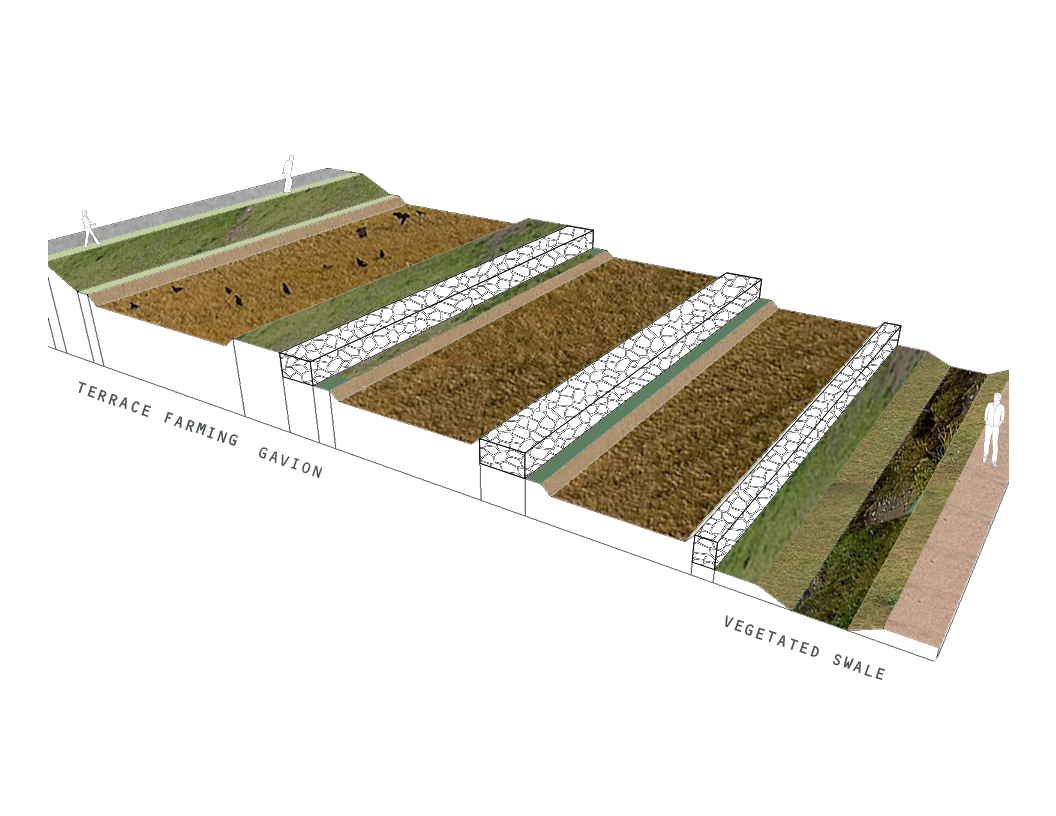By Yui Omori
0. Acknowledgement
I am sincerely honored to have been selected as the Ito Foundation U.S.A.- FUTI scholarship recipient. Knowing that I was selected has offered me much relief this semester and has allowed me to focus more on my studies. Again, I really appreciate your support.
1. Studio Projects
During the spring semester, I focused on developing a site for people with a range of cognitive and physical disabilities. The studio site was located in a rural setting just outside of Charlotte, North Carolina. The design for the site required sensitivity and thoughtful consideration for a diverse user group with varying physical and mental abilities. The most challenging part of the project was trying to accommodate this diverse group of people and offer a variety of opportunities for interaction both on-site and in the surrounding neighborhoods. For example, some of the users are hypersensitive to the presence of others and external stimuli while other users are not. Thus, balancing the extent of “isolation” and “integration” was the key to solving this contradiction.



Note: One of the most important elements of the proposed design is a boardwalk with a universally accessible slope that allows all individuals the opportunity to engage with the terraced farm.

Note: Another important consideration behind the design is the management of stormwater. The proposed agricultural terraces offer the benefit of controlling stormwater while also providing suitable habitats for
fauna and flora and recreational opportunities for people.
2. Landscape History
I had also taken a class on the history of designed landscapes this semester. I really enjoyed learning about different landscapes throughout the world and “traveling” through time. Especially my final individual project delved into the 3,600-year-old Santorini eruptions and tsunamis and how these catastrophic events led to the collapse of
a civilization. What is intriguing is that these mega-disasters may not only be the reason for the collapse of Minoan Crete due to the evidence of a hundred-year gap between the disasters and the collapse. It is particularly important to note that tsunamis generated by volcano-related earthquakes are rare phenomena. On the one hand, the Akahoya eruption in Japan 7,300 years ago killed over 7 million people, leading to the decline of the Jo- mon civilization. Additionally, recent research found evidence of tsunamis generated by volcanic eruptions. Knowing and understanding these rare natural events of the past can perhaps contribute to our (understanding of, response to?) modern natural disasters such as the Hunga Tonga Hunga tsunamis that occurred this past December.
This gave me new insight and posed additional questions in my coastal disaster research; how landscape architects can pass the lesson learned from the past disasters with different times and places to people all over the world and future generations. I will concentrate more on coastal infrastructure design next school year, and I will keep the possibility of compound disasters of volcanic eruptions and tsunamis in mind.
Lastly, I would like to once again express my sincere gratitude to FUTI.
